Investment in renewables has fallen dramatically over the last couple of years, but is this negatively correlated to the rise in the cost of capital or just a "coincidence?"
We think that the cost of capital will continue to rise. 3.6% on the United States 10-Year is nothing. It could be argued that 6% is reasonable (and that only gets you back to 2000 levels). We do have to wonder what the US 10-year yield will be when oil breaks $100?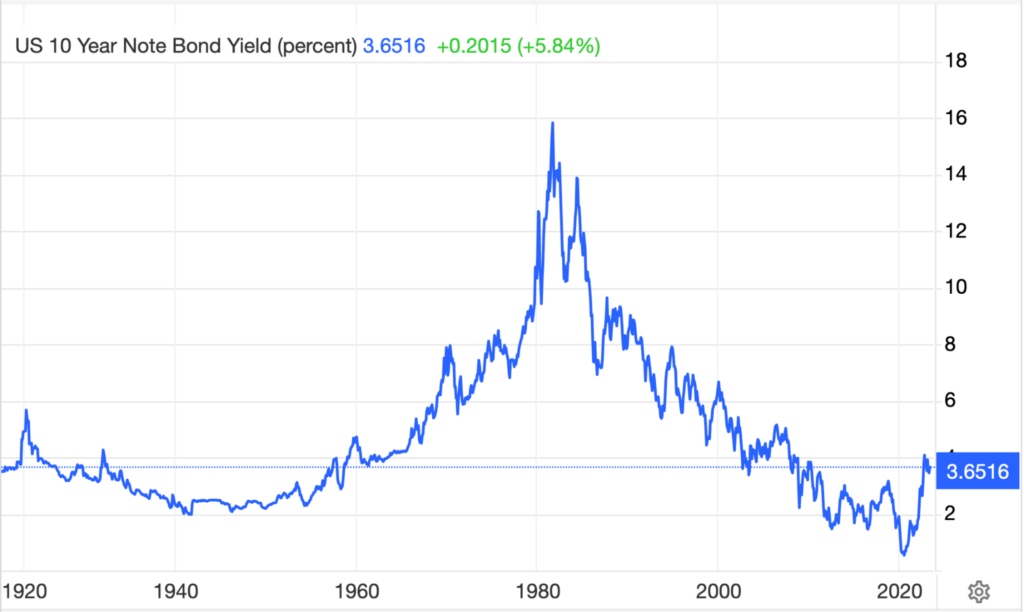
Notice how "global warming" transitioned into "climate change," which is now increasingly called the "climate crisis." This, folks, is NLP (neuro linguistic programming). It is also something else. Nonsense!
Hydrogen: All Expensive Talk
There has been a lot of talk about hydrogen. What it all comes down to is cost, it remains just far too expensive compared to oil and gas.
It seems that that huge move we saw in hydrogen stocks in the five years leading up to the start of 2021 was merely a symptom of the growth theme (or whatever it was). Hydrogen stocks peaked when the ARK Innovation ETF (ARKK) peaked.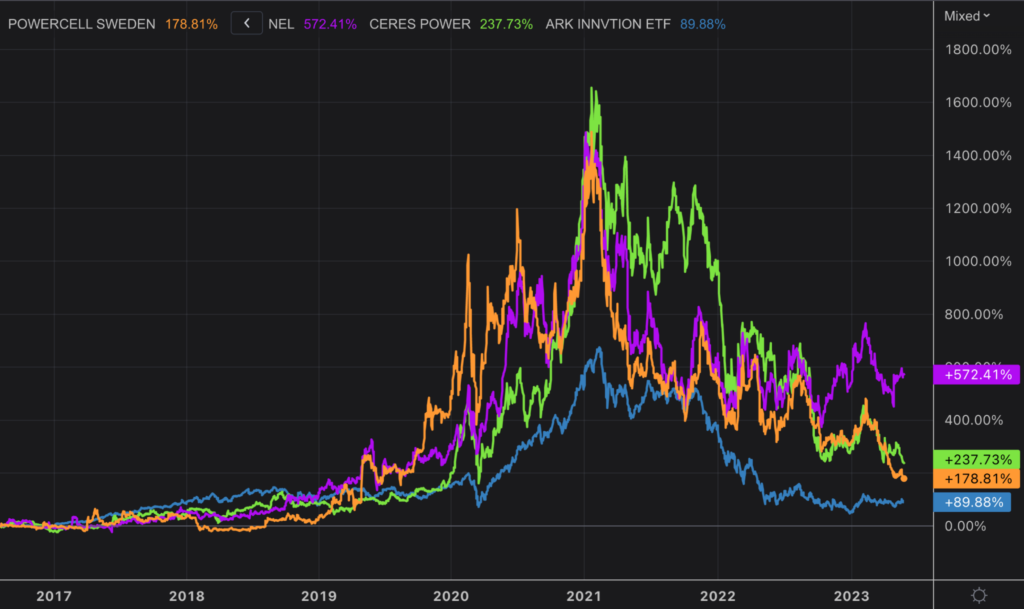
We note that hydrogen stocks continue to lose money and only exist because of continual equity capital injections. Nel is a good proxy for the industry — look at the third to last row "issuance (retirement) of stock."
Meanwhile, Offshore Rigs Are at Discount
You could say that the offshore drilling sector is still priced as if we won’t be needing too many drilling rigs come 2030. Take a look at this: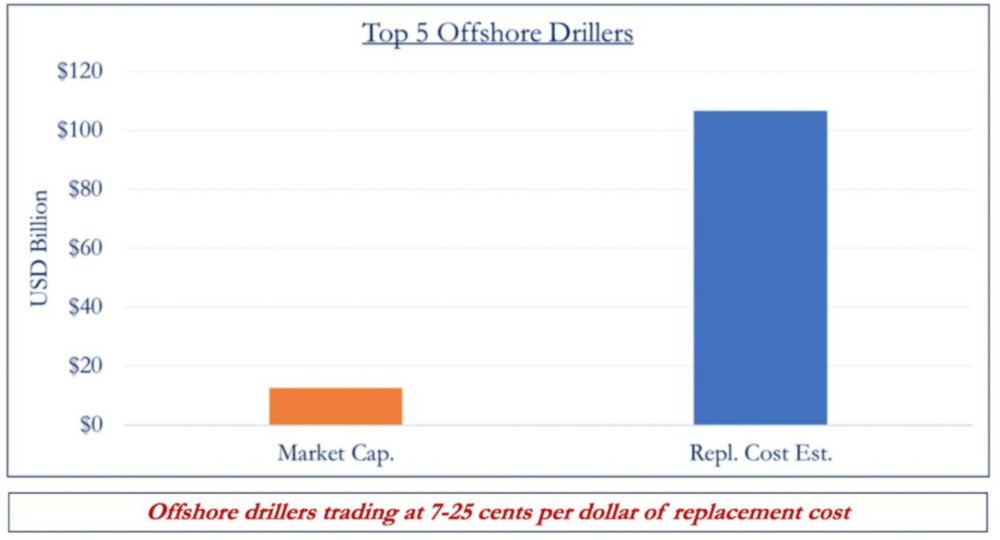
We doubt that the market cap of offshore oil drillers will trade near the replacement cost of rigs. However, an 85% discount to replacement cost suggests that there is a huge margin of safety and that over the long term it will be difficult to lose money by investing in a basket of offshore oil drillers.
In Case You Wondered How Low the Oil Inventory Is…
We came across this chart — not something that is anything new but nonetheless, it is a good reminder.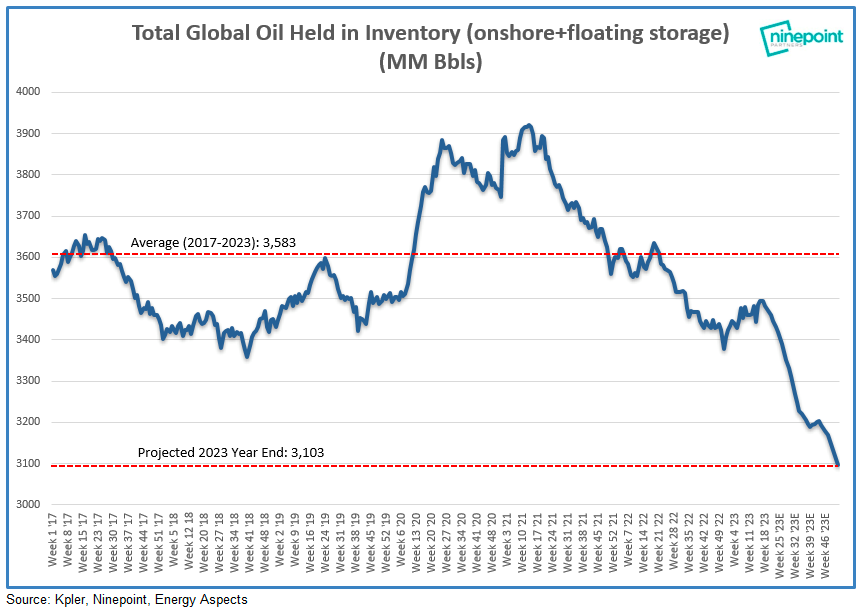
Looking at the situation in the US (which would be a big part of the chart above), inventory is at the same level as in 1985. Ain’t that something!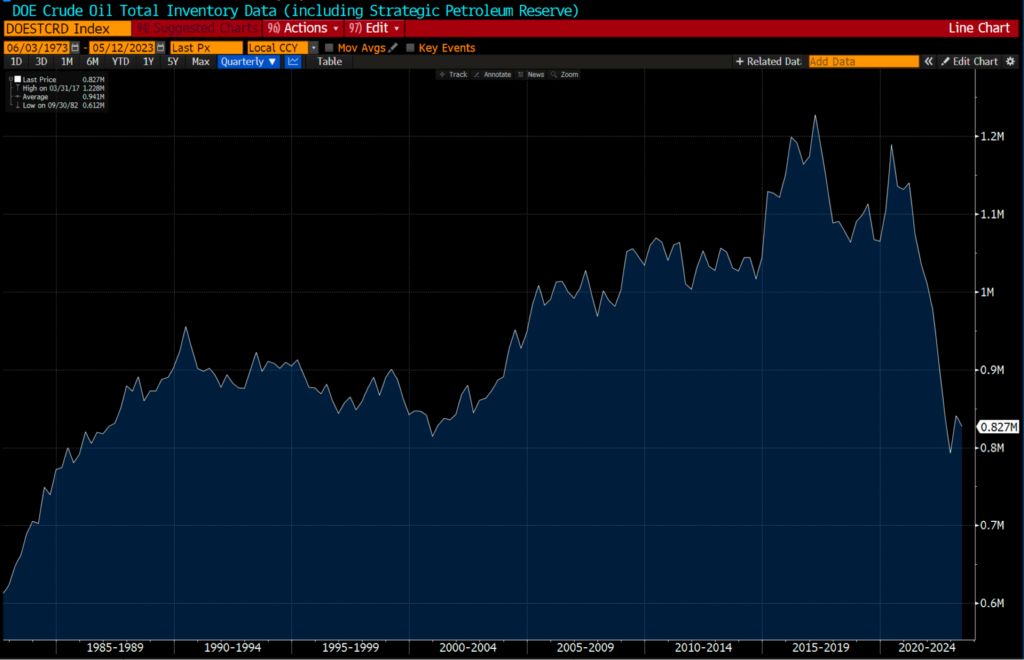
Now, here is a brain wave: looking at US crude inventories relative to US monthly consumption of oil, it is about the lowest (relative to oil consumed) as it was in 2000. If records went back far enough, we may well find that there hasn’t been a period in a couple of generations where inventory levels were this low relative to the level of oil consumed.
We don’t know if this has any direct effect on the price of oil under normal circumstances, but throw in a geopolitical conflict or two in the right spot and pick a price as to how high oil will go, as there isn’t any margin for safety. Mr, Biden and your administration, we love you!
Yet, it is remarkable how oil has remained relatively high even in the face of very bearish sentiment.
Money managers that trade derivatives linked to oil and fuel prices are about as bearish as they’ve been in more than a decade, suggesting they’re braced for a recession that could cause contracts from crude to jet fuel to take another tumble.
The trading positions of non-commercial players such as hedge funds are near the most bearish levels since at least 2011 across a combination of all major oil contracts. And in bets that are perhaps most indicative of recession expectations, speculators’ combined views on diesel and gasoil — fuels that power the economy — are near the most bearish levels since early in the Covid-19 pandemic.
There is no one indicator that we rely on 100%. However, the charts below are very interesting. How can sentiment be worse than the worst of 2020 or the end of 2015? Either we are missing something or the next big move for oil is up!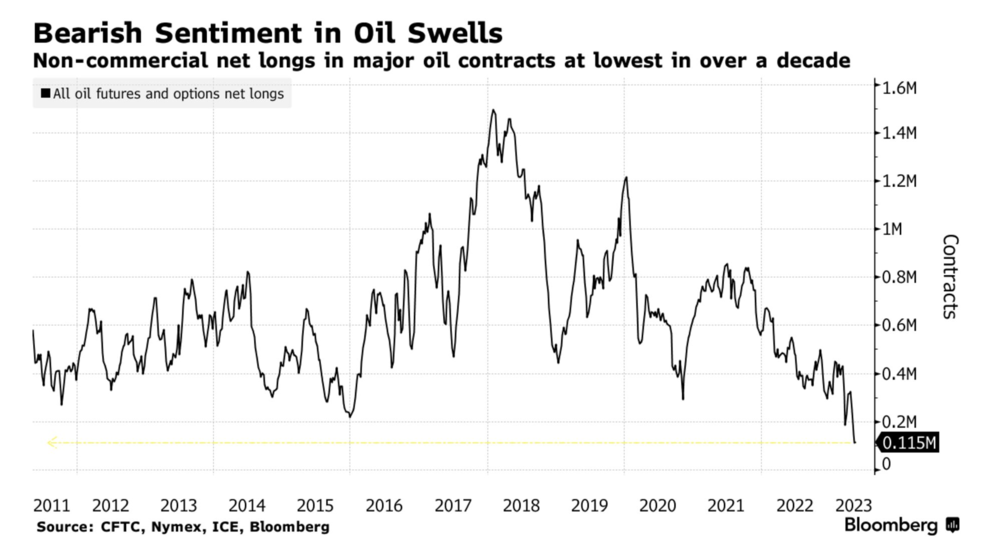
The market is telling us oil is not needed. I hope the market is right because, fortunately, we think we have the perfect answer. We can burn all the politicians. We’ll be reducing carbon emissions and "saving the planet" in more ways than one.
Which stock should you buy in your very next trade?
AI computing powers are changing the stock market. Investing.com's ProPicks AI includes 6 winning stock portfolios chosen by our advanced AI. In 2024 alone, ProPicks AI identified 2 stocks that surged over 150%, 4 additional stocks that leaped over 30%, and 3 more that climbed over 25%. Which stock will be the next to soar?
Unlock ProPicks AI